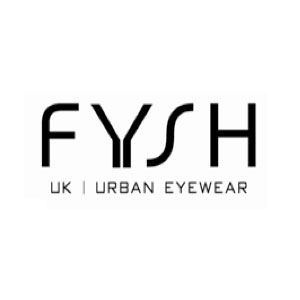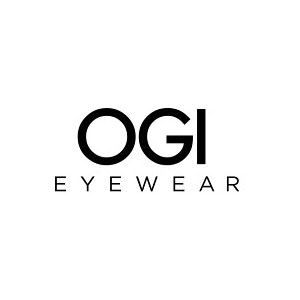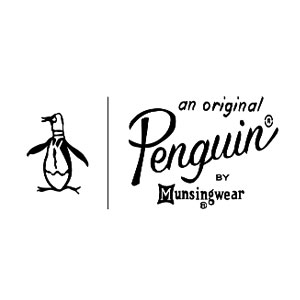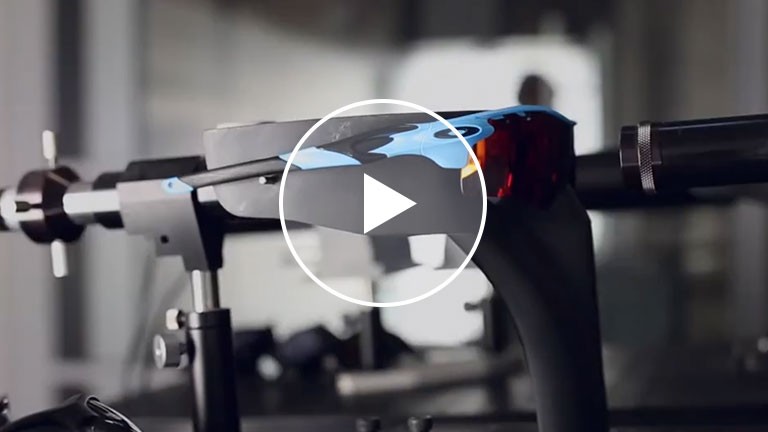Patient Education
Frame Gallery
- Details
- Written by Harbor View Eye Care Team

There are many opinions on the topic of texting and driving. The goal of this blog is to neither refute nor endorse the subject, but instead to explore the effects on vision during texting. It is up to the reader to make a judgement call on the endorsement of texting and driving.
You may not be surprised to hear that texting has replaced drunken driving as the number one cause of deaths in the teenage population. According to Cohen Children’s Medical Center in New York, teen drunken driving has gone down over 50% since 1991 but the number of people texting and driving has skyrocketed. It is illegal to text and drive in the UK, but not in many states in the USA. Some phone companies are launching ad campaigns to discourage texting while driving, and they are reporting a 23 times higher incidence of an accident if you text and drive.
So why does it make you more likely to crash from a visual perspective? The problem lies in distraction from driving. For example, it takes a fast texter approximately 20 seconds to read and reply to a text. At 55 mph on the highway, a driver glances away from the road for approximately one-third of a mile. When the driver is focusing on their screen, this gives the driver essentially tunnel vision causing the visual system to essentially use peripheral vision. Your central vision is used to detect depth perception, detail, and colors such as red or green. So when texting, your depth perception, or 3-D vision, is altered, so that if cars are stopped ahead or closing in rapidly, its not detected. Brake lights are red, so while texting, our visual system is using mainly peripheral vision, which can detect gross movement, but not the color red.
So next time you encounter situations with texting and driving, know that the visual system was designed to perform advanced visual perception while using central vision. This includes detail vision, depth perception, and color vision....all of which are placed on hold while texting and driving, since the visual system switches to peripheral vision designed to detect gross movements.
For more information on texting and driving see:
US Dept. of Transportation
The content of this blog cannot be reproduced or duplicated without the express written consent of Eye IQ.
- Details
- Written by Harbor View Eye Care Team

Your Eyes.......We only have two of them so treat them well and learn how to keep them safe from harm. Here is a list of five vital ways to prevent injuries to one of your most precious assets, your vision.
- Wear Safety Glasses. Failure to wear protective eye wear is one of the main causes of job related injuries to the eye according to OSHA (Occupational Safety & Health Administration). Safety glasses are made from a polycarbonate material which can withstand the impact of a .22 caliber bullet. Safety glasses at work protect you from foreign bodies and chemical exposure into the eye area. Wearing protective eyewear for yard work, weed eating, and cutting wood keeps injury from high velocity foreign bodies in the eye to a minimum.
- Wear Sunglasses with UV A and UV B protection. Doing so protects the thin skin around the eyes from sunburn, and also helps protect your ocular system. It has long been stated that excessive exposure to sunlight causes cataracts, so using ultraviolet (UV) protection in your sunglasses is vital. Many sunglasses, especially for children, do not contain UV filters. These can actually harm your eyes more, exposing more sunlight through a dilated pupil. Buyer beware: not all sun glasses are created equally.
- Make sure children’s glasses are made of polycarbonate material and have UV protection. This ensures a minimum exposure of ultraviolet rays which will pay off when they are older by helping prevent cataracts. The polycarbonate lens material gives maximum protection against breakage.
- Don’t obstruct vision with a child’s costume. During Halloween, opt for face paint instead of a mask that could occlude or obstruct vision. Also put reflector tape on the child’s costume. Bulky masks that accompany halloween costumes can be a deterrent to the child seeing out of the mask. During Halloween or a costume party, keep it fun be “seeing and being seen.”
- Use the wisdom of preventative maintenance. Get yearly eye examinations where the entire retina is evaluated with a a dilated exam. Just as you change oil on your car every three thousand miles keeps it running in tip top shape, the same holds true for your ocular health. Routine check ups, sunglasses, vitamins, and smoking cessation will keep those peepers healthy and clear.
It is incumbent upon us all to be educated on these facts for ourselves, our family members, and our co workers.
Applying these pointers can be used to keep your eyes healthy, efficient, clear and safe.
The content of this blog cannot be reproduced or duplicated without the express written consent of Eye IQ.
- Details
- Written by Harbor View Eye Care Team
The latest installment of PROCESS takes us to Foothill Ranch, California, where Oakley's Factory Pilot Ryan Weber walks us through a series of tests highlighting the technological innovation in eyewear that takes place over at Oakley’s labs for today’s consumer.
The first two “Lens Superiority Tests,” respectively labeled “Definition and Clarity,” and “Laser Precision” reaffirm Oakley’s mission of having their lenses do most, if not all of the work when considering how the brain and eyes interact in order to process imagery. The final two “Lens Superiority Tests,” “Impact Protection Part 1″ and “Impact Protection Part 2″ are exactly what they sound like.
The first impact test displays the protection offered by Oakley lenses when on the receiving end of an incoming, high velocity projectile. A quarter-inch steel shot is blasted directly at the Plutonite® lenses at 102 MPH, modeling the impact of road debris hitting the face while cycling.
The second impact test showcases the resilience of Oakley lenses, which are able to withstand the direct force of a 500 gram steel spike being dropped from 127 centimeters above. In real life, this test replicates the lenses protecting your eyes from a handlebar collision on the trail/contact with a tree branch on the trail or an accidental smack in the face by the tip of a ski.
In the spirit of performance and innovation, Oakley continues to raise the bar by developing new technologies that exceed today’s standards.
For up-to-date news and more: https://www.hypebeast.com View more HYPEBEAST videos: https://hypb.st/VbvIa3
- Details
- Written by Harbor View Eye Care Team
You wouldn’t dream of going to the beach without sunscreen on, or snow skiing without goggles to protect you from ”snow blindness”..... So what do you do to protect your eyes from potentially harmful blue light from screens? Blue light exposure is at an all time high, with the average viewer spending greater than 5 hours per day behind some sort of screen device.
New research is exploring the effect of light rays emitted from phones, computers, television, and some LCD lights to see the effect on the retina and lens of the eye. The blue light spectrum is a portion of the visible light spectrum similar to UV-A and UV-B. UV-B exposure has been a known cause of cortical cataracts. This is leading researchers to conclude that this exposure needs to be studied more.
“New research evidence suggests that high energy visible light from artificial sources may not be entirely harmless,” from Karl Citek, O.D.,Ph.D., Chairman of the American Optometric Association Commission on Ophthalmic Standards. With this in mind, more research globally on this portion of the light spectrum has now ensued.
One of the potential effects are the increased risk of macular degeneration because the delicate macular cells of the retina can be affected by long term exposure to certain wavelengths. Another event being studied is the effect on sleep habits.
 You see, blue light exposure right before bedtime may inhibit sleep because the blue light keeps us alert, and blocks the production of melatonin which puts us to sleep. So stopping use of your computer one hour before bedtime is recommended in order for the body to properly produce the melatonin you need to fall asleep easily.
You see, blue light exposure right before bedtime may inhibit sleep because the blue light keeps us alert, and blocks the production of melatonin which puts us to sleep. So stopping use of your computer one hour before bedtime is recommended in order for the body to properly produce the melatonin you need to fall asleep easily.
Treatments for limiting exposure to harmful blue rays comes in the form of tinted lenses. Yellow, amber, orange or red lenses can protect more fully from any potential hazards of blue light exposure. There are also anti-reflective lens treatments that are quite effective put out by major lens companies.
Overall, more research is definitely needed, but there may be a moment in the future that putting on “screen time “ glasses will be as common as sunscreen.
References
Article on Light and Eye Damage by Gregory W. Good, O.D., Ph.D.
 The content of this blog cannot be reproduced or duplicated without the express written consent of EYEiQ
The content of this blog cannot be reproduced or duplicated without the express written consent of EYEiQ
This entry passed through the Full-Text RSS service - if this is your content and you're reading it on someone else's site, please read the FAQ at fivefilters.org/content-only/faq.php#publishers.
- Details
- Written by Harbor View Eye Care Team
Glaucoma, often referred to as “the silent thief of sight”, can occur with no warning signs, pain or symptoms. It affects 3 million people in the United States and has caused blindness in over 120,000 people. Glaucoma cannot be cured, but if detected early can be managed to limit its effects.
Glaucoma usually occurs when there is an increase of pressure within your eye, but can occur with normal eye pressure as well. This pressure causes damage to the optic nerve, which is the weakest part of your eye, leading to decreased peripheral vision and possibly blindness.
Your eye is divided into two chambers, the anterior chamber at the front of the eye, and the posterior chamber at the back. A fluid, called the aqueous humor, is produced by the cilliary body and circulates between the two chambers to clean and nourish your eye. Once it reaches the edge of your iris it leaves the eye through an opening called the trabecular meshwork.
With glaucoma, more fluid is produced than can be removed, which leads to an increase in pressure in the anterior chamber. Eventually the pressure throughout your eye increases, exerting force on the neural fibers of your optic nerve. Over time this causes damage to the optic nerve, which leads to partial or total vision loss.
There are a number of risk factors for glaucoma including age, ethnicity, family history, and certain medical disorders such as diabetes. If you are at a higher risk for glaucoma be sure and consult with your eye care provider regularly to increase your chance of early detection.
















